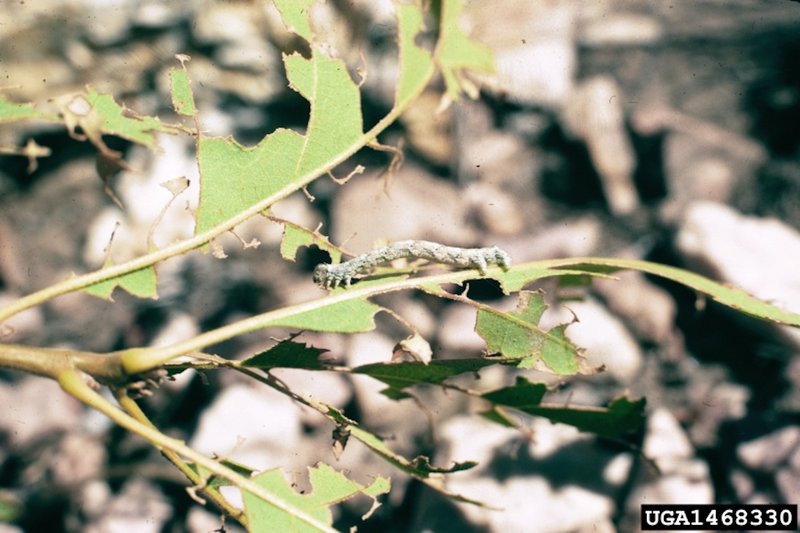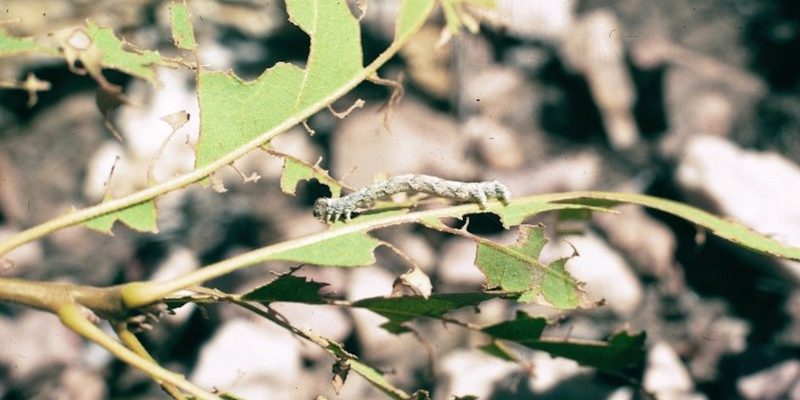
Inchworms are the larvae of certain moths and are best recognized for their unique inching movement as they crawl. They feast on the leaves of trees and shrubs, often in large groups, which can lead to considerable defoliation. This process can weaken, and in some cases kill, the plant, leading to frustrations for homeowners and landscapers alike. Let’s dive deeper into how these little guys manage to strip plants and what can be done about it.
What Are Inchworms? Understanding Their Life Cycle
To grasp how inchworms defoliate, it’s crucial to know what they are and where they come from. Inchworms are actually the larval stage of certain moths, typically belonging to the family Geometridae. They go through several life stages, starting as eggs laid on leaves. Once they hatch, they enter the larval stage, which is when they start causing trouble.
These larvae measure around one to two inches long and often blend in with their surroundings, making them hard to spot. They’re named for their signature “inching” movement, where they curl their bodies and bring their back end forward, creating a loop that looks like they’re measuring, hence the name “inchworm.”
Most common types include the **canopy inchworm** and the **elm spanworm**, each preferring specific trees or shrubs to munch on. Their diet often includes species like oak, maple, and even birch. So, next time you spot one inching along your garden, think about which tree they might be snacking on!
How Do Inchworms Defoliate Trees?
Inchworms can be quite the feast-and-flee artists. The typical method of defoliation starts when they emerge in late spring or early summer. As they hatch, they begin to chomp down on tender leaves, often starting with the outer edges before moving inward.
Here’s the thing: inchworms work together in large numbers. When several of them get together on one tree, they can strip it of leaves in a matter of days. This rapid consumption can leave a tree looking ghostly—just bare branches left behind!
In addition to being a visual horror, defoliation can sap the tree’s strength. Without leaves, a tree struggles to perform photosynthesis, which means it can’t generate the food it needs to survive. Over time, continuous defoliation can lead to weakened trees, making them more susceptible to diseases and pests.
Identifying Inchworm Infestations
If you suspect inchworms are making a meal out of your trees, there are a few signs to watch for. First, look for clusters of small, brown or green caterpillars munching away on leaves. You might also notice chewed leaves that resemble lacework, leaving only the veins intact.
Another telltale sign is droppings. Inchworms produce small, pellet-like droppings that you can find scattered below infested trees. If you see these signs, it’s time to take action. Keeping an eye out early in the season can help you catch them before they do too much damage.
If you’re still unsure, consider checking with a local extension office or a pest control expert. They can help identify the culprits and provide advice on how to handle them effectively.
Natural Predators and Control Methods
Fortunately, nature has a way of balancing itself out. Inchworms have several natural predators, including birds, wasps, and other insects. Encouraging these beneficial animals can help keep inchworm populations in check. Here are a few ways to promote a healthier ecosystem:
- Plant a variety of flowers and shrubs that attract birds and beneficial insects.
- Do not use broad-spectrum pesticides, as they can harm the very predators you want to keep around.
- Maintain a diverse garden to promote a balanced diet for local wildlife.
If the infestation is particularly severe, you might want to consider insecticidal soaps or neem oil. These options tend to be safer for other wildlife and can effectively target inchworms. Always follow the instructions carefully to avoid harming your plants.
Preventing Inchworm Damage
Prevention is key when dealing with inchworms. Here are some practical steps to shield your trees and shrubs from these munching pests:
- Monitor regularly: Keep an eye on your trees, especially during the early summer months when inchworms are most active.
- Regular pruning: Trim any damaged or infested branches to prevent inchworms from spreading.
- Healthy plants: Healthy trees are more resilient. Provide adequate water, nutrients, and sunlight to help them withstand pest attacks.
By staying proactive, you can help ensure your plants are less appealing to inchworms and better able to defend themselves.
When to Seek Professional Help
Sometimes, no matter how much you try to prevent an infestation, it can still happen. If your trees start looking more like skeletons than lush greenery, you might need to call in the pros. A pest control expert can assess the situation and apply targeted treatments that are both effective and safe for your garden.
You might be wondering how to choose the right service. Look for companies that specialize in environmentally-friendly pest control methods. This way, you can protect your plants while also maintaining the health of the local ecosystem.
The Bottom Line on Inchworms and Your Garden
Inchworms may be small, but they can certainly pack a punch when it comes to defoliating trees and shrubs. Understanding their life cycle, spotting the signs of an infestation, and taking proactive steps are fundamental in protecting your plants.
You have the power to manage these little invaders. Whether you choose natural methods, enlist the help of natural predators, or seek professional help, staying informed is your best defense.
Remember, a healthy garden is one that thrives despite the challenges. So keep an eye on those trees and shrubs, and don’t let inchworms steal your greenery away! Together, we can protect our growing spaces and enjoy the beauty of nature.

